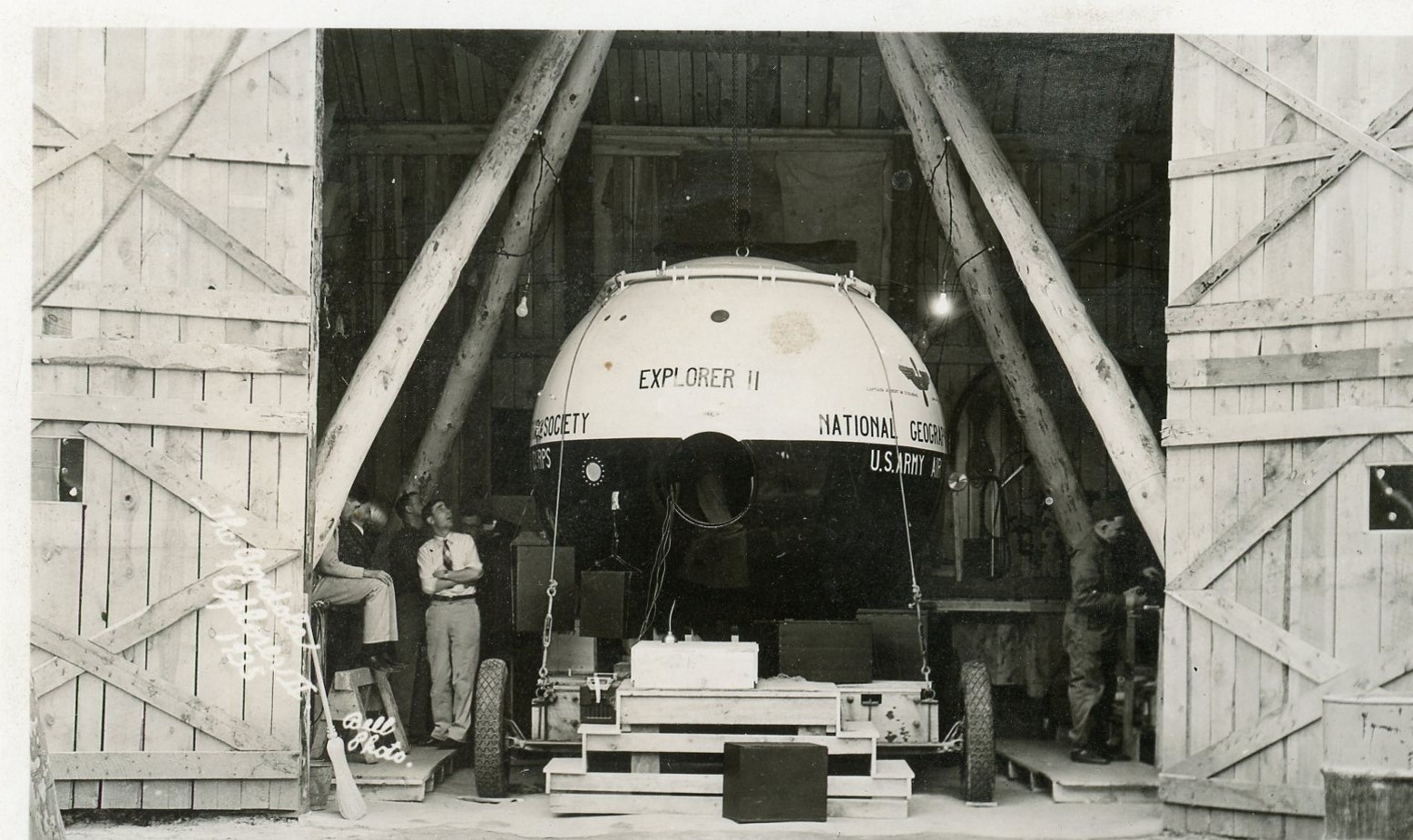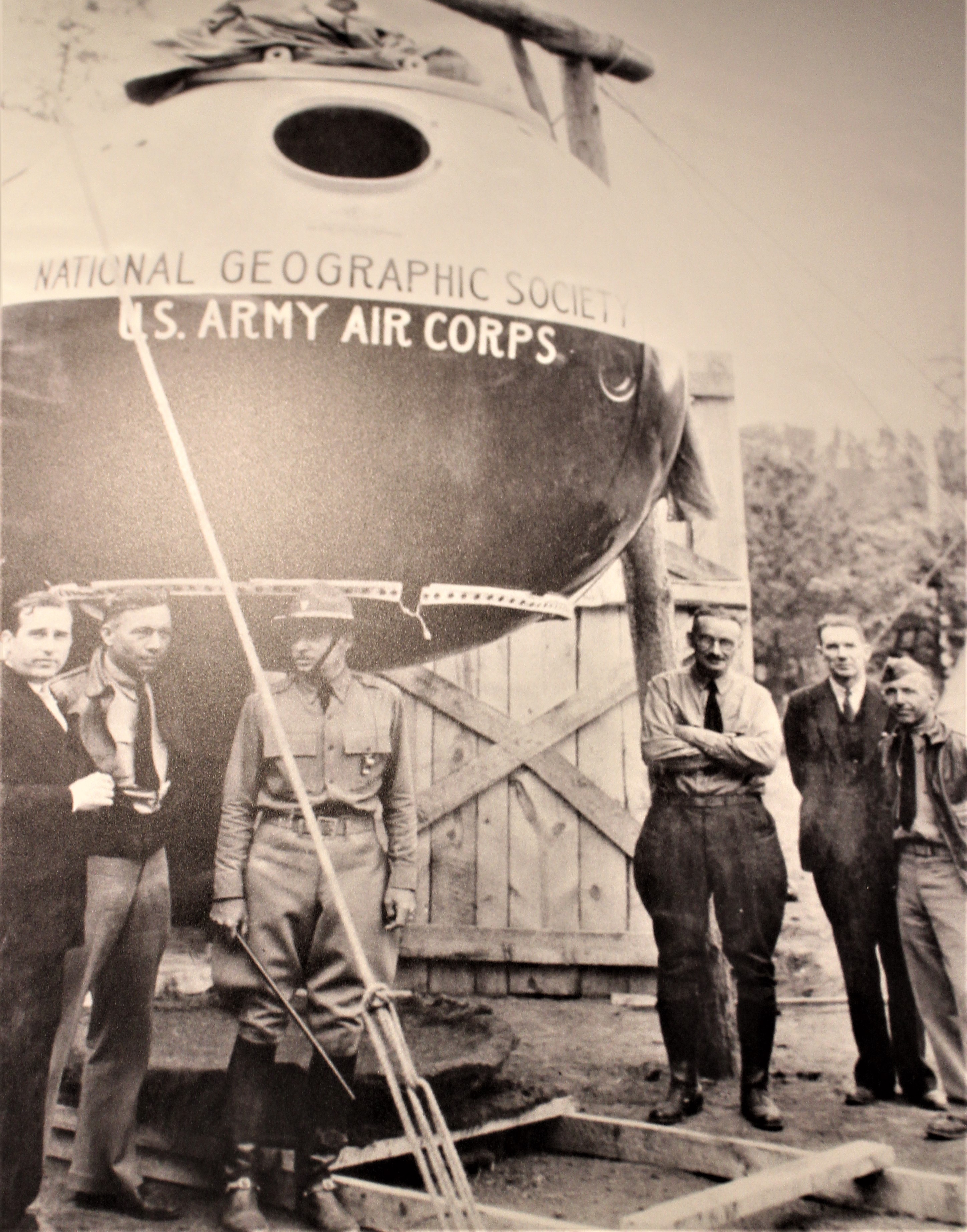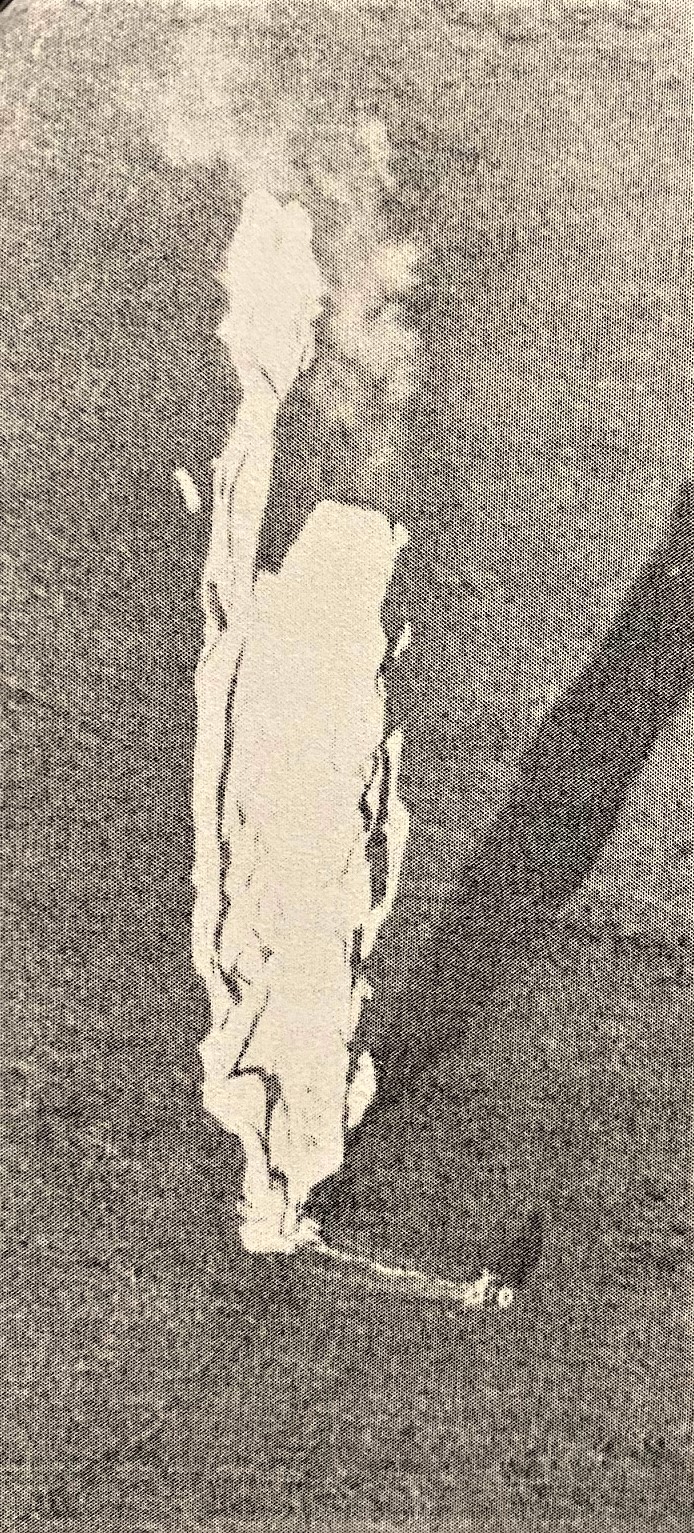
Image Courtesy of the Minnilusa Historical Association and The Journey Museum and Learning Center
Immediately following the Explorer I accident, the National Geographic Society and the Army Air Corps began to plan the second balloon launch, Explorer II. Explorer II's balloon had a capacity of 3.7 million cubic feet. It was also created by the Goodyear-Zeppelin Corporation. To minimize the risks of a gas-induced explosion, Explorer II was filled with helium instead of hydrogen gas. On July 12, 1935, Explorer II was ready, as were Captain Albert Stevens and First Lieutenant Orvil A. Anderson. As they were inflating the balloon, there was a loud explosion and the ripped balloon collapsed in seven seconds. The balloon had a seventeen-foot tear, therefore, the mission was temporarily aborted. After the repairs were complete and the balloon was back in the Stratobowl, everyone was ready for a flight, but the weather was not. The area could have been fine in the Stratobowl, but 500 to 700 miles away might have been a different story.

Image Courtesy of the Minnilusa Historical Association and The Journey Museum and Learning Center
"On November 9, 1935, all weather reports came together, and the orders to inflate were given... At 7:00 a.m., November 11, the green light was given and the flight began. The temperature was 5 degrees with a northwest wind at eight miles per hour. Ascent was extremely slow. There were some anxious moments as the balloon began to drift toward the southeast rim of the bowl. Ballast was hurriedly dumped, spewing lead shot over everyone below. But the gondola left the bowl, just barely clearing the trees... Explorer II flight would reach a record altitude of 72,395,395 feet or 13.71 miles above sea level. That computes to 96/100ths of the mass of the atmosphere."
Balloons Aloft: Flying South Dakota Skies

Image Courtesy of The South Dakota Air and Space Museum

Image courtesy of Gene Bauer
Explorer II landed eight hours and 13 minutes after take-off on a section of school land, 12 miles south of White Lake, South Dakota, or 15 miles southeast of Kimball, South Dakota.
"I was playing football in Chamberlain that afternoon, and watched the flight of the balloon throughout the game. I can still remember how we tried to distract the other football team by pointing to the balloon, but it didn't work. They still beat us by 2 or 3 touchdowns. I worked in the barbershop and the Kimball hotel and that evening the lobby was filled with reporters and government officials."
Robert Plut
Image Courtesy of Balloons Aloft: Flying South Dakota Skies
After landing, the first instrument removed was the barograph which was taken to the U.S. Bureau of Standards. The Explorer II flight was significant in breaking scientific barriers. It provided proof that the Earth is round and uncovered the secret of the skies.

“The studies of this expedition in at least a score of scientific fields- studies bearing upon weather prediction and cosmic ray, upon farming problems and radio transmission- illustrate the diverse activities of the National Geographic Society and the useful functions of the United States Army in peace time.” The Evening Star, December, 12, 1935
On the Edge of Space: The Explorer Expeditions of 1934-1935
Video Courtesy of Captain-Crystal Stout